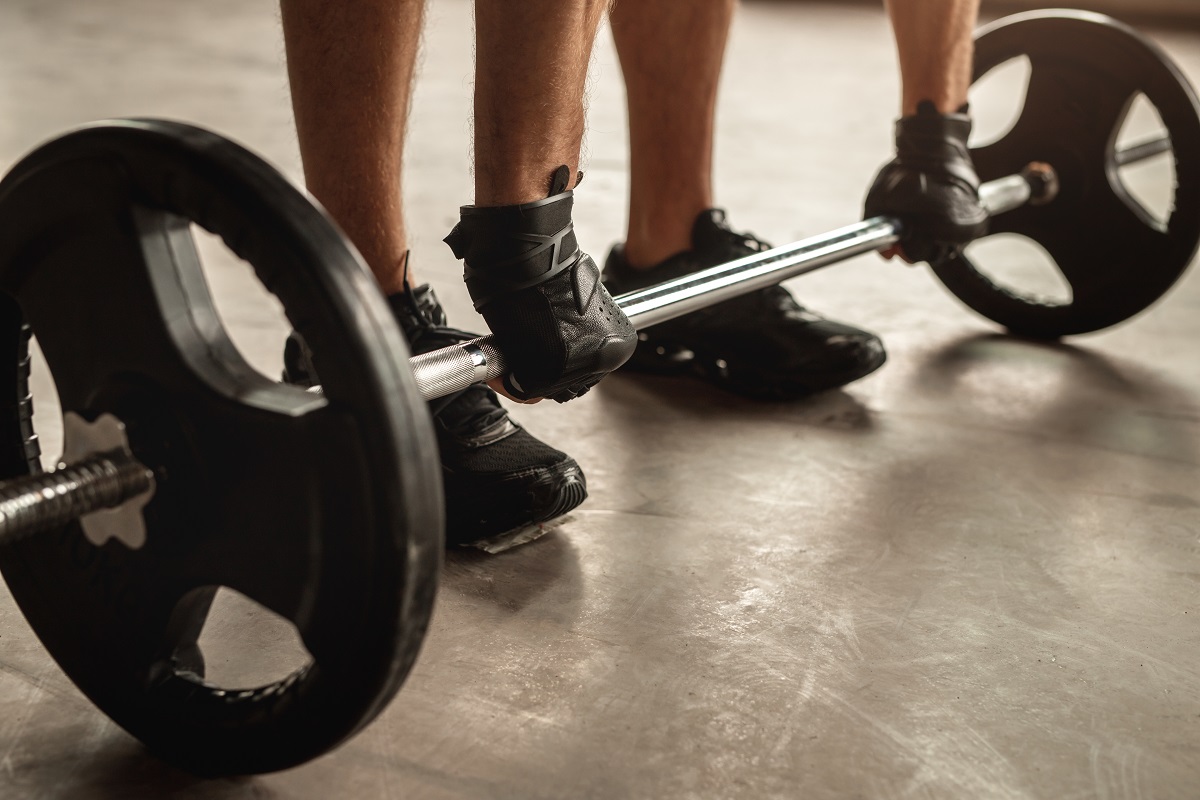This comprehensive guide serves as an all-encompassing resource for anyone keen on enhancing their fitness levels through the principle of muscular development training. It encapsulates a deep dive into the realms of bodybuilding, strength training and overall physical fitness with a strong emphasis on the growth and enhancement of the muscular system.
An in-depth understanding of muscular development training
Muscular development is a fascinating process, showing us the amazing adaptability of the human body. But what exactly is it?
What is muscular development?
Muscular development refers to a physiological process that leads to an increase in muscle mass and strength. This increase is generally achieved through a combination of resistance training and a balanced, nutrient-dense diet.
The biological underpinnings of muscular development training
To fully comprehend muscular development, it’s essential to understand the biological process that drives it, known as hypertrophy. This is the process through which muscle cells grow and increase in size. Hypertrophy is the body’s response to consistent and progressively increasing resistance or load during training.
The stress caused to the muscles during such training leads to minor tissue damage. This damage triggers the body’s repair process, which doesn’t just fix the damage, but reinforces the tissue to be better equipped to handle future stress. This results in an increase in muscle mass and strength.
Training types and techniques for muscular development training
A well-rounded muscular development training plan should encompass a variety of training types such as weightlifting, calisthenics (bodyweight exercises) and HIIT training . This diversity stimulates all muscle groups and helps maintain engagement and enthusiasm in your fitness journey.
Weightlifting
Weightlifting, also known as resistance training, is widely regarded as a cornerstone of muscular development training. It encompasses a range of exercises and techniques that utilize resistance to challenge your muscles and stimulate their growth. Whether your goal is to build strength, increase muscle size or improve overall fitness, weightlifting can play a vital role in your training regimen.

One of the primary benefits of weightlifting is its ability to promote muscle hypertrophy, which refers to the increase in muscle size. When you lift weights, your muscles experience microscopic damage at the cellular level. This triggers a response in your body, leading to muscle protein synthesis and the growth of new muscle fibers. Over time, consistent weightlifting workouts can result in significant muscle development and improved strength. It is very important for muscular development training.
Weightlifting exercises typically involve the use of barbells, dumbbells, kettlebells, weight machines or resistance bands. These tools provide varying levels of resistance that target specific muscle groups, allowing you to focus on particular areas of your body. Compound exercises, such as:
Deadlift: This exercise is a comprehensive workout that primarily targets your lower back, hips and thighs. Maintain a flat back throughout the lift to avoid injuries.
Bench Press: A quintessential upper body exercise, working your chest, shoulders and triceps. Keep your feet flat on the floor and your back pressed against the bench.
Squats: Primarily targets your thighs, hips and buttocks. Maintain an upright posture and avoid letting your knees extend past your toes.
engage multiple muscle groups simultaneously, making them particularly effective for overall muscle development.
Calisthenics or bodyweight exercises
Calisthenics, a form of exercise that utilises your body weight as resistance, has gained immense popularity in recent years due to its flexibility in both gym and home environments. With its emphasis on functional movements and the absence of complex equipment, calisthenics offers a comprehensive workout that targets various muscle groups while improving strength, flexibility and endurance. It is very important for muscular development training.

Advantages of calisthenics
One of the primary advantages of calisthenics is its accessibility. Regardless of your fitness level or location, you can engage in these exercises with minimal equipment. Whether you’re at a fully-equipped gym or in the comfort of your own home, all you need is your body and a bit of open space. This versatility allows individuals to easily incorporate calisthenics into their fitness routines, regardless of their circumstances.
The exercises involved in calisthenics are diverse and can be tailored to suit individual fitness goals. From basic exercises like :
Push-ups: An excellent workout for your chest, shoulders and arms. Ensure your body forms a straight line from your head to your heels.
Pull-ups: This exercise focuses on your back and arms. Avoid swinging and aim for a controlled, steady movement.
Plank: A powerful core strengthener. Keep your body aligned and avoid arching your back.
Lunges: This exercise primarily targets your lower body muscles. Ensure your knee does not extend past your toes.
Mountain Climbers: A cardio exercise that also works your core. Keep your movements steady and controlled.
Dips: This exercise strengthens your triceps and shoulders. Avoid shrugging your shoulders and keep your movements smooth.
By leveraging your own body weight, these exercises provide a comprehensive workout that engages multiple muscle groups simultaneously, promoting functional strength and overall coordination.
Furthermore, calisthenics offers a unique challenge in terms of progression. As you build strength and improve your form, you can advance to more demanding variations of each exercise, continually pushing yourself to new limits. This scalability makes calisthenics suitable for beginners and seasoned athletes alike, as each person can tailor their routine to their individual fitness level and goals.
High-Intensity Interval Training (HIIT)

High-Intensity Interval Training (HIIT) has gained significant popularity in recent years due to its effectiveness in improving cardiovascular fitness, endurance and overall health. HIIT workouts consist of short bursts of intense exercise followed by brief periods of active recovery or rest. This alternating pattern of high-intensity effort and recovery stimulates the cardiovascular system, boosts metabolism and elicits various physiological adaptations. It is very important for muscular development training.
Battle Rope is a dynamic and intense workout routine that utilises a thick, heavy rope. It is designed to improve cardiovascular endurance, build strength, and increase overall power and explosiveness.
Burpees: A full-body cardio exercise that enhances strength and endurance. Keep your movements smooth and steady.
Sprint Intervals: Excellent for cardiovascular endurance and fat burning. Start with shorter sprints and gradually increase the duration.
Jump Squats: This exercise works on your lower body strength and explosiveness. Aim for a deep squat and a powerful jump.
One of the primary benefits of HIIT is its efficiency. Traditional cardio workouts often involve long-duration, steady-state exercises like jogging or cycling. While these activities can improve cardiovascular fitness, they may not be the most time-effective option for those with busy schedules. HIIT, on the other hand, provides a time-efficient alternative by delivering significant benefits in a shorter amount of time.
During HIIT sessions, the intense intervals push the heart rate to its maximum or near-maximum capacity, challenging the cardiovascular system. This stimulates adaptations such as improved heart efficiency, increased stroke volume and enhanced oxygen utilisation. Over time, these adaptations lead to improved cardiovascular fitness, enabling individuals to perform physical activities with reduced fatigue and improved endurance.
Nutrition for muscular development training
Proper nutrition is as crucial for muscular development training.

Protein
Protein is essential for muscle repair and growth. Depending on your training intensity, aim for 1.6 to 2.2 grams of protein per kilogram of body weight daily.
Carbohydrates
Carbohydrates fuel your workouts and aid in muscle recovery. Include complex carbohydrates in your diet like whole grains, vegetables and fruits.
Fats
Healthy fats, such as omega-3 and omega-6 fatty acids, are important for overall health, hormone regulation and providing a source of energy.
Hydration
Adequate hydration is essential during intense training. Aim for at least 2-3 litres of water daily, more if training intensively or in hot conditions.
Supplements
Supplements can enhance your nutritional intake. Consider protein supplements, creatine and branched-chain amino acids (BCAAs), if needed.
Mental preparation techniques for muscular development training

Mindfulness and meditation
Mindfulness and meditation can improve focus and reduce stress, contributing to better performance and recovery in muscular development training.
Goal setting
Setting specific, measurable, achievable, relevant and time-bound (SMART) goals can help guide your training and keep you motivated.
Injury prevention and recovery
Appropriate warm-up exercises, correct form and adequate rest are critical to prevent injuries.
Adapting the programme and overcoming challenges
Consistent monitoring of your progress is essential to adapt your program. Challenges are inevitable, but with perseverance and resilience, you can overcome them and achieve your fitness goals.
Sample 12-week muscular development training programme
This program provides a structured approach to muscular development training, incorporating various training types to maximize muscle growth and strength.
1-4 Week: Focus on mastering form and gradually increasing intensity.
5-8 Week: Incorporate more HIIT and weightlifting sessions to build strength and endurance.
9-12 Week: Incorporate advanced exercises, increase weights and reduce rest periods to optimize muscle growth.
Tracking progress for muscular development training
![]()
Using fitness apps, journals or wearable fitness trackers can help you monitor your progress, adapt your program based on your progress and stay motivated.
This comprehensive guide offers a roadmap for successful muscular development training. Remember that consistency, patience and a balanced approach are the keys to success.
NASM pyramid
The NASM (National Academy of Sports Medicine) training model consists of five phases, which provide a structured progression in designing exercise programs. These phases are:
- Stabilization endurance
- Strength endurance
- Muscular development (covered in this article)
- Maximal Strength
- Power
These five phases in the NASM training model provide a systematic approach to progressively challenge the body, address different training goals and optimize overall fitness and performance.
Happy training!
